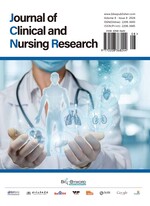Abstract
Objective: To investigate and analyze the annual physical examination results of retired employees from a unit in the civil aviation system, focusing on blood lipids, blood glucose, blood uric acid, and blood routine results. The study aims to provide relevant references for formulating reasonable disease management measures for preventing and controlling hyperlipidemia, hyperuricemia, and other conditions in retired employees. Methods: The examination results of 231 participants were collected and analyzed. The participants were divided into four groups based on age: middle-aged group, young-old group, middle-old group, and old-old group. The blood test results were compared across these groups, and an assessment of atherosclerotic cardiovascular disease (ASCVD) risk levels was completed in conjunction with medical history. Blood test results were also compared by gender. Results: There were no significant statistical differences in blood test results when grouped by age. However, the prevalence of hyperuricemia was higher in males than in females, while the prevalence of hypercholesterolemia was higher in females than in males. The LDL-C target achievement rate was lower in the moderate-and-high-risk group as well as the very high-risk group as defined by ASCVD risk levels. Conclusion: Management of hyperuricemia and hyperlipidemia in retired employees (elderly patients) should be strengthened to reduce the risk of ASCVD events and alleviate the potential medical burden associated with disease progression.
References
Summary of the 2021 Report on Cardiovascular Health and Diseases in China, n.d., 2022. Prevention and Treatment of Cardiovascular and Cerebrovascular Diseases, 22(4): 20–36 + 40.
GBD 2017 Causes of Death Collaborators, 2018, Global, Regional, and National Age-Sex-Specific Mortality for 282 Causes of Death in 195 Countries and Territories, 1980–2017: A Systematic Analysis for the Global Burden of Disease Study 2017. Lancet, 392(10159): 1736–1788. https://doi.org/10.1016/S0140-6736(18)32203-7. Erratum in Lancet, 392(10160): 2170. https://doi.org/10.1016/S0140-6736(18)32833-2. Erratum in Lancet, 393(10190): e44. https://doi.org/10.1016/S0140-6736(19)31049-9
Joint Expert Committee for the Revision of the Chinese Guidelines for Lipid Management, 2023, Chinese Guidelines for Lipid Management (2023). Chinese Circulation Journal, 38(3): 237–271.
Wang B, Wei S, 2014, Introduction to General Medicine (2nd Edition). Jiangsu Phoenix Science and Technology Press, Nanjing, 68.
Wang Y, Wang J, Bao Z, et al., 2016, Epidemiological Analysis of Chronic Diseases and Comorbidities in Middle-aged and Elderly Physical Examination Populations in Shanghai. Geriatrics & Health Care, 22(2): 116–120.
Liu Z, Wang L, Dai B, et al., 2005, Investigation of Blood Lipid Levels and Related Disease Spectrum in Elderly People Undergoing Health Examinations in Guangzhou. Chinese Journal of Geriatrics, 2005(5): 597–598.
Chen Z, Jiang Y, Lu Y, et al., 2022, Meta-Analysis of the Prevalence of Dyslipidemia in Elderly People in China. Chinese General Practice, 25(1): 115–121.
Writing Group of the “Report on Cardiovascular Health and Diseases in China”, 2021, Overview of the “Report on Cardiovascular Health and Diseases in China 2020”. Chinese Journal of Cardiovascular Research, 19(7): 582–590.
Liu ML, Zhang ZF, Fu P, et al., 2022, Chinese Expert Consensus on Management of Dyslipidemia in the Elderly. Zhonghua Nei Ke Za Zhi, 61(10): 1095–1118. https://doi.org/10.3760/cma.j.cn112138-20220407-11251
Joint Committee for the Revision of the Chinese Guidelines for the Prevention and Treatment of Dyslipidemia in Adults, 2016, Chinese Guidelines for the Prevention and Treatment of Dyslipidemia in Adults (2016 Revision). Chinese Circulation Journal, 31(10): 937–950.
World Association of Chinese Pathologists and Laboratory Medicine Physicians, 2018, Expert Consensus on Laboratory Diagnostic Reporting for Dyslipidemia. Chinese Medical Journal, 98(22): 1739–1742.
Li S, Liu HH, Guo YL, et al., 2021, Improvement of Evaluation in Chinese Patients with Atherosclerotic Cardiovascular Disease Using the Very-High-Risk Refinement: A Population-Based Study. Lancet Reg Health West Pac, 17: 100286. https://doi.org/10.1016/j.lanwpc.2021.100286
Atherosclerosis and Coronary Heart Disease Group of the Cardiovascular Branch of the Chinese Medical Association, Editorial Committee of the Chinese Journal of Cardiovascular Diseases, 2020, Chinese Expert Consensus on Lipid Management for Patients with Very High-Risk Atherosclerotic Cardiovascular Diseases. Chinese Journal of Cardiovascular Diseases, 48(4): 280–286.
Mach F, Baigent C, Catapano AL, et al., 2020, 2019 ESC/EAS Guidelines for the Management of Dyslipidaemias: Lipid Modification to Reduce Cardiovascular Risk. Eur Heart J, 41(1): 111–188. https://doi.org/10.1093/eurheartj/ehz455. Erratum in Eur Heart J, 41(44): 4255. https://doi.org/10.1093/eurheartj/ehz826
